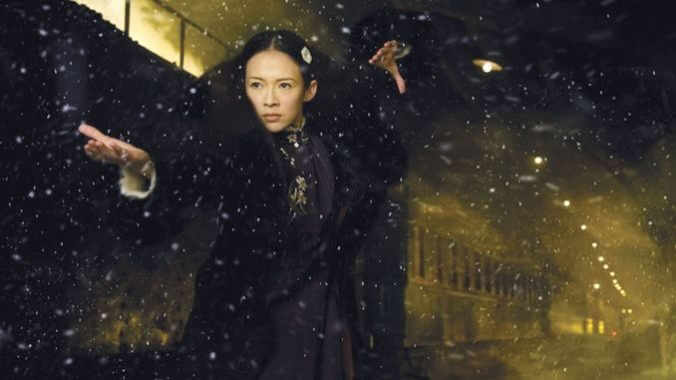Clip Man: How to Ruin a Wong Kar-Wai Movie

“To me, the structure of a movie is like a clock or a prized watch. It’s about precision and perfect balance,” director Wong Kar-wai wrote about his re-edited American cut of The Grandmaster, his now decade-old film about Ip Man, the martial arts master and mentor of Bruce Lee. This calls to mind a line of dialogue in the film, where Ip Man (Tony Leung) reminds an opponent that kung fu relies on a similar high standard of precision. For its U.S. release, the film’s runtime was chopped down from its original Hong Kong cut of 130 minutes to about 104. Despite Wong’s careful supervision of the American cut, it’s impossible to ignore the presence of Harvey Weinstein, who acquired the film’s international distribution rights along with Annapurna Pictures.
Harvey and Bob Weinstein’s companies were notorious for forcing alterations onto a slew of films, especially non-English ones. When considering the difficult process another East Asian auteur had when Weinstein acquired his 2013 Berlin festival film, Wong’s reassuring words on the legitimacy of the American cut are called into question.
What did Weinstein himself say about the controversial re-edits? “At the end of the day, who gives a shit?”
It’s difficult not to give a shit when the facts are plainly laid out: The Hong Kong cut of The Grandmaster is a good movie, and the U.S. cut is a bad one. As expected when 25 minutes are shorn from a film’s runtime, the cuts are extensive—a mix of restructured plotlines and truncated arcs that completely deflate the delicate, sensory atmosphere that define a Wong Kar-wai film. When we think of In the Mood for Love, Chungking Express or Fallen Angels, we think of the exceptional cinematography of Christopher Doyle, the tactility of the Hong Kong settings, the characters for whom a potent yearning hides behind every poeticism. Easily forgotten is the connective glue that binds them all; Wong Kar-wai’s editing is the unifier that ensures every element has the biggest possible impact.
Trying to correct a Wong Kar-wai film by re-editing can only ever weaken it; messing with the flow, pacing and shot selection doesn’t just sand a film of its identity, it upsets the equilibrium of unique visuals, environmental immersion, and evocative character writing. Despite the director’s involvement, the U.S. cut of The Grandmaster serves as an excellent guide in how to ruin a Wong Kar-wai film.
What are some key identifiers of Wong Kar-wai’s editing? The filmmaker has worked with eight different editors across his ten features, but since Days of Being Wild, William Chang has always been part of the editing team—which explains why his films are cut in such similar ways. A common, arguably defining technique we see is “step-printing”. Here, the camera records fewer images per second (called a slow shutterspeed), but instead of slowing the footage down, it’s run at a regular 24 frames per second, giving everything a motion blur and making it feel both fractured and frantic. As Wong explains, “It delivers something, a texture that feels like it’s very speedy, but actually it’s very slow.” In The Grandmaster, we see it a lot in quiet shots of Ip among his family, giving the image the quality of a partially faded and unclear memory. But it’s also cut into fights, illustrating Ip’s heightened sensitivity in combat—it’s like he can break down time.
But bridging the gap between cinematography and editing, Wong and his editors (here, Chang is joined by Benjamin Courtines and Poon Hung Yiu) also used slow shutterspeed in conjunction with regular slow-motion (where the footage is shot at a fast shutterspeed and run at 24 fps to look smooth). Again, it’s seen extensively in martial arts sequences to give a jagged, unstable energy to the action, but is even used in shots as simple as a group walking. When we see Gong Er (Ziyi Zhang), the daughter of an aged martial arts grandmaster, proceed through a crowded hall with her extensive entourage, cutting between the step-printed bustle of the crowd to her slow-mo’d stride, it’s clear how commanding and determined she is compared to the faceless confusion of her surroundings.
-

-

-

-

-

-

-

-

-

-

-

-

-

-

-

-

-

-

-

-

-

-

-

-

-

-

-

-

-

-

-

-

-

-

-

-

-

-

-

-








































